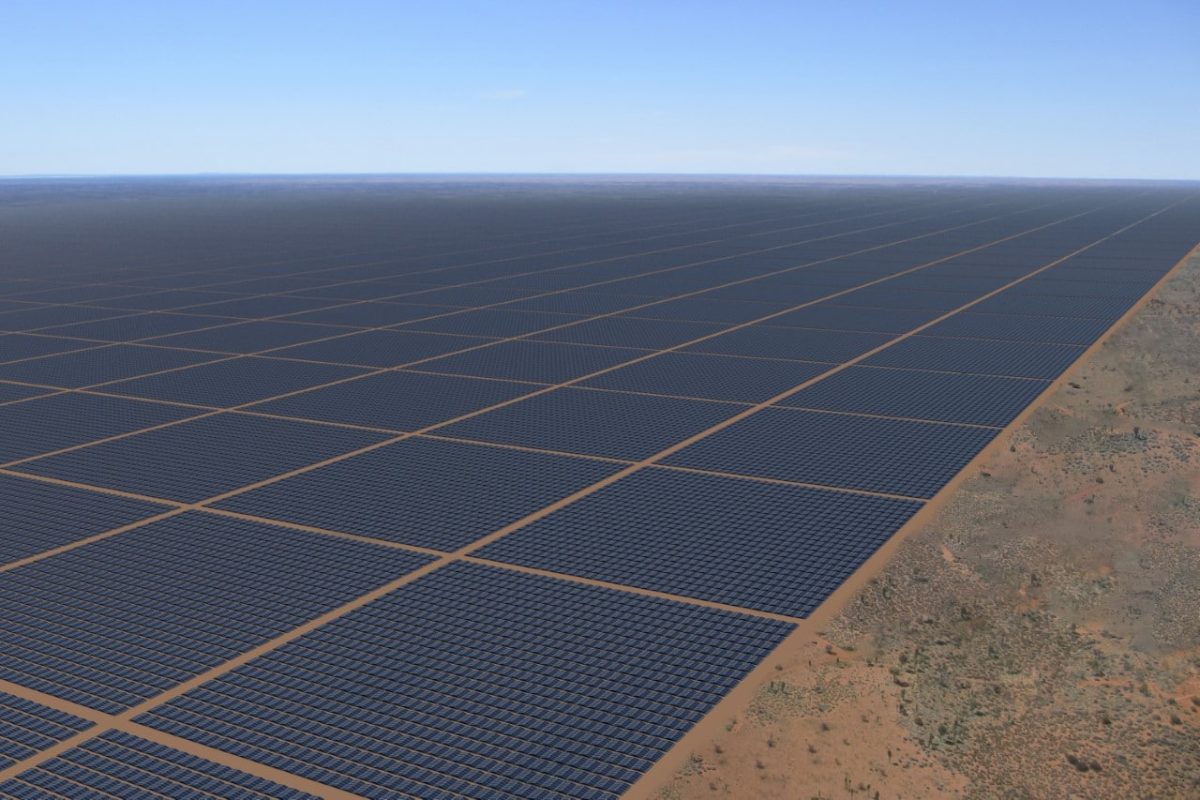Plans continue to gather steam to develop a 10 GW solar farm and a 30 GW storage facility near Tennant Creek, in Australia's Northern Territory, in order to export solar power to Singapore via a submarine transmission link. On Thursday, the Northern Territory government and Sun Cable signed a project development agreement (PDA).
The Northern Territory government said the PDA provides a roadmap that will allow it to work in partnership with Sun Cable to finalize land tenure and commercial arrangements for the AAPL, ahead of the project’s financial close. Northern Territory Chief Minister Michael Gunner said the PDA is a big step forward.
“This project will put the (Northern Territory) on the international map when it comes to renewables,” he said. “This project will transform the territory into a renewable energy powerhouse.”
The solar farm and battery storage facility will be built across 12,000 hectares at Powell Creek station, about 70 km southwest of Elliott, in the Northern Territory’s Barkly region. As well as the region’s climatic advantages, the facility will capitalize on close access to road and rail infrastructure.

Once operational, power from what will be Australia’s largest renewable energy infrastructure project will be exported via a high-voltage direct current (HVDC) transmission link connecting the precinct to the Darwin-Katherine Interconnected System (DKIS). Power will then be transported via a 3,800-km HVDC submarine cable to Singapore. The project is expected to generate enough renewable electricity to power more than 3 million homes a year.
“Through the Australia-ASEAN Power Link, Sun Cable seeks to generate and transmit dispatchable, competitively-priced, renewable energy at scale,” Sun Cable Managing Director David Griffin said. “This will provide affordable, reliable energy to support industrial growth in Darwin, as well as supplying up to 20% of Singapore’s electricity needs.”
Economic boost
It is estimated the project will inject up to AUD 8 billion ($6.1 billion) into the regional economy, with about 1,500 jobs to be created during construction and 350 ongoing positions once operations begin. The AAPL will export AUD 1 billion worth of solar electricity per year upon completion.
Northern Territory Minister for Renewables and Energy Eva Lawler said that the AAPL is a major success story for the territory.
“This agreement shows strong confidence for investing in the Northern Territory and investing in renewable energy, which is not only good for the environment, but good for the economy,” she said. “Locals can look forward to affordable energy that’s reliable and renewable by the end of the decade. We look forward to the next steps of this exciting project.”
Sun Cable has said construction for the project will begin immediately after financial close in October 2023, with commercial operations to commence in 2027. It has confirmed that Sydney-based solar module manufacturer 5B will supply prefabricated, redeployable modules for the project.
This content is protected by copyright and may not be reused. If you want to cooperate with us and would like to reuse some of our content, please contact: editors@pv-magazine.com.




An impressive project
Great and educative contents on solar power
Interesting! But stupid, unless they can come up with a solution on how to recycle the panels after there 20 – 25 year life cycle. Solar power contrary to popular believe is not that environment friendly due to the mining and manufacturing process.
I wish that all the learned in this world would allow themselves the opportunity to become using common sense and look at both nuclear and hydrogen power sources which will have at minimum 100 year life cycle.
You all have a wonderful dat and may god bless you all.
Bernie, recycling the panels will not be a problem technically. It may not be, economically but given the scale there will be someone who will work it out and do it. After all most of the system is just aluminium frames and steel supports. Easy. The actual silicon cells can be ground up and reused or put into building products or used as fill, if necessary. It is not that hard a problem to solve, compared to nuclear waste or coal ash !